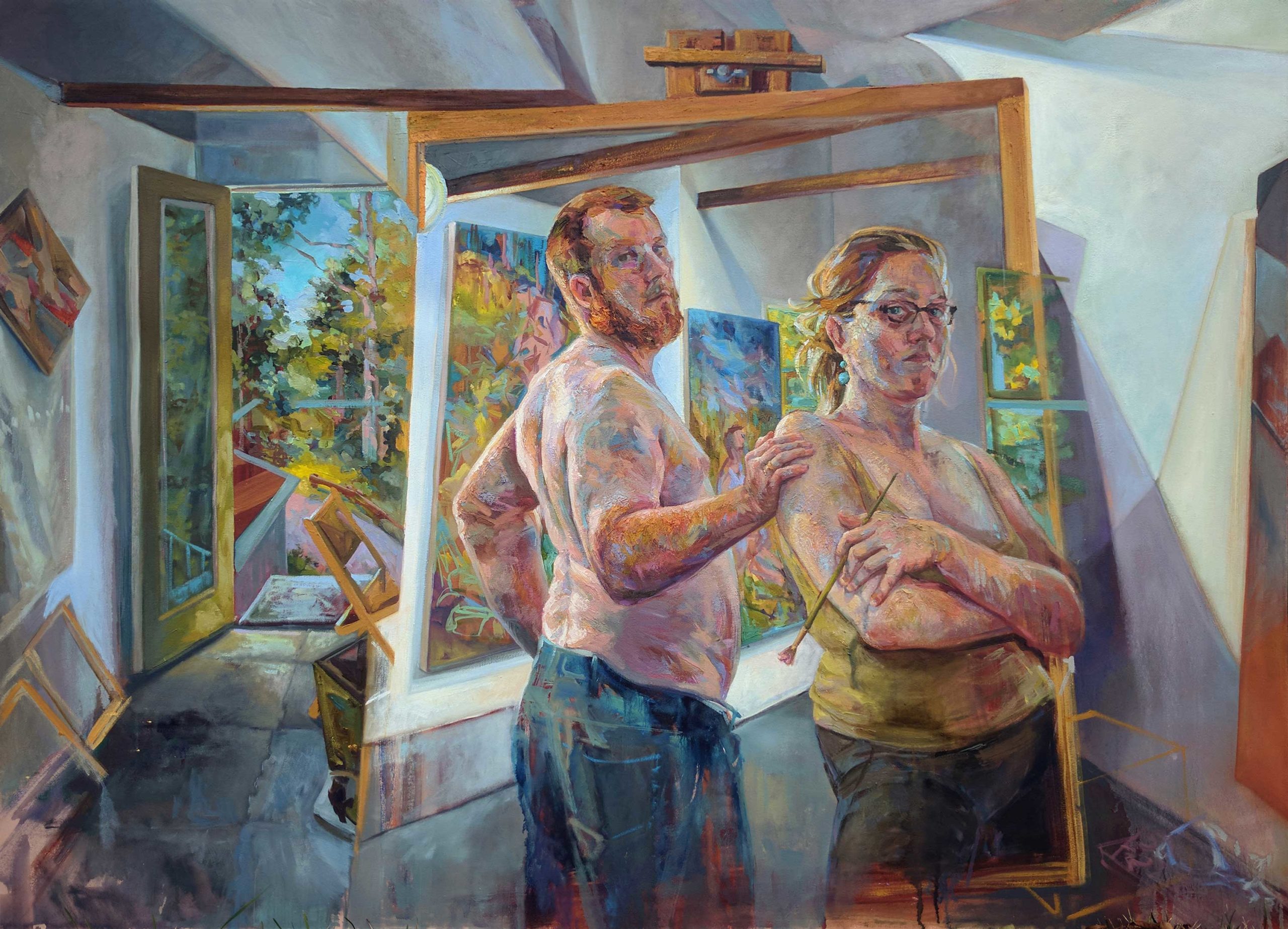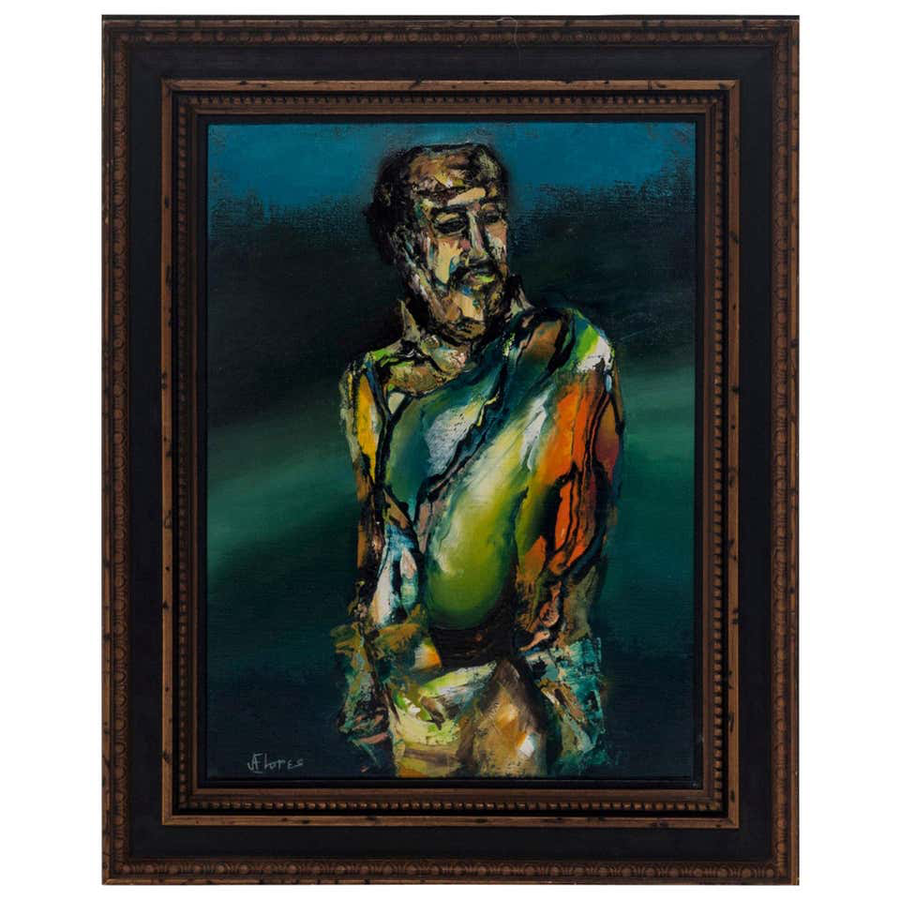The Development of Figurative Oil Painting: Recognizing Its Historic Relevance and Modern Interpretations
The advancement of metaphorical oil painting offers as a compelling lens through which to check out the interplay between imaginative expression and historical context. Contemporary artists, attracting from this abundant heritage, are now reinterpreting the human figure in means that challenge typical narratives.
Origins of Metaphorical Oil Painting
The beginnings of figurative oil painting can be traced back to the early Renaissance in Europe, specifically in the 15th century. This period noted a significant separation from the flat depictions and stiff kinds characteristic of medieval art. Musicians began to check out naturalism, emphasizing the human figure and its psychological expression. The development of oil paint enabled better depth of shade and information, improving the realism and vibrancy of their work.

In this transformative age, numbers were typically depicted within contextually abundant environments, showcasing not only their physical attributes yet additionally their emotional states. Pioneers such as Jan van Eyck and Titian utilized the medium's versatility, using layering methods to achieve luminosity and appearance. This advancement helped with the portrayal of detailed materials and the subtleties of complexion, adding to the development of portrait and narrative scenes.
Additionally, the Renaissance focus on humanism promoted a gratitude for individualism, which subsequently influenced musicians to produce more relatable and vibrant numbers - figurative oil painting. As a result, metaphorical oil painting became a powerful automobile for storytelling and psychological interaction, laying the foundation for future creative movements and designs
Secret Historical Motions
Substantial historical activities have formed the evolution of metaphorical oil painting, each adding distinct ideologies and methods that expanded the medium's opportunities. The Renaissance marked a zero hour, stressing realism and the human kind, with artists like Leonardo da Vinci and Michelangelo pressing the boundaries of anatomical precision and perspective. Following this, the Baroque age brought significant contrasts of light and shadow, exhibited by Caravaggio, that infused spiritual themes with extreme emotionality.
The 19th century presented Romanticism and Realism, where artists such as Delacroix and Courbet tested classical suitables, concentrating on specific expression and everyday life. The development of Impressionism further transformed the tool by stressing the effects of light and color, bring about a separation from traditional representation.
In the early 20th century, motions like Expressionism and Cubism redefined metaphorical painting via abstraction and the expedition of psychological deepness. Each of these activities not only reflected the societal modifications of their times however additionally prepared for contemporary interpretations. The interplay between these historical motions has actually developed an abundant tapestry of designs and philosophies, affecting modern-day artists in their quest of catching the human experience on canvas.
Strategies and Materials Development

Throughout the Baroque duration, techniques such as chiaroscuro and sfumato emerged, enhancing the emotional vibration of figurative structures. Musicians began to explore glazes and impasto, controling texture and luminance. By the 19th century, developments like making use of pre-mixed paints in tubes transformed availability, enabling musicians to advice paint en plein air and catch the short lived impacts of light.
The 20th century observed the introduction of artificial pigments and tools, which expanded the scheme and altered the consistency of oil paints. The expedition of brand-new application methods, such as combination blades and brushes of varying rigidity, further diversified artistic expression. Collectively, these innovations show the evolving connection in between materials, methods, and the artistic vision integral in figurative oil painting.

Contemporary Interpretations
Contemporary interpretations of figurative oil painting reflect a dynamic dialogue between tradition and development, where artists challenge established norms and check out diverse themes. This evolution manifests in various ways, as contemporary musicians click for source mix timeless strategies with modern concepts, frequently dealing with social, political, and personal narratives.
Several experts attract motivation from historical jobs, yet they instill their pieces with contemporary perspectives, making use of the human kind as an automobile for commentary on society, sex, and identity. Artists increasingly experiment with abstraction, distortion, and combined media, which permits for a wider analysis of the number and its context.
Additionally, using vivid shade combinations and non-traditional make-ups commonly serves to disrupt typical seeing experiences, prompting important engagement from target markets. This shift in emphasis prolongs beyond aesthetics; it mirrors a growing recognition of the complexities of human experience in an interconnected globe.
As figurative oil paint remains to advance, it stays a vital medium for discovering the nuances of modern life, symbolizing both a regard for heritage and a dedication to progressive idea. The outcome is a rich tapestry of expression that reverberates with the complexities of the modern-day human condition.
Influence On Modern Art
The influence of figurative oil painting on modern-day art is profound, as it has consistently inspired a myriad of imaginative movements and methods throughout the 21st and 20th centuries. From Expressionism to Surrealism and beyond, the expedition of the human number has actually remained a central style, permitting artists to communicate intricate emotions and narratives. This emphasis on metaphorical depiction has go to this site resulted in a re-examination of typical strategies, resulting in ingenious techniques that mix realism with abstraction.
Additionally, modern musicians have accepted metaphorical oil paint as a way to deal with political and social concerns, making use of the tool to test perceptions of identity, society, and sex. The resurgence of interest in metaphorical job in current years shows a yearning for connection in an increasingly electronic globe, where human experience and emotion are critical.
Additionally, the discussion in between figurative oil painting and modern-day art is noticeable in the jobs of artists such as Kehinde Wiley and Jenny Saville, who attract on historical references while infusing their items with contemporary relevance. Inevitably, metaphorical oil painting proceeds to form and redefine contemporary artistic expression, emphasizing its long-lasting importance in the art world.
Verdict
The evolution of figurative oil paint emphasizes its historic significance and flexibility across numerous creative motions. Eventually, figurative oil paint remains a vital medium for checking out the human experience, resonating greatly in today's digital landscape.
The advancement of metaphorical oil paint serves as an engaging lens via which to take a look at the interplay in between creative expression and historic context.Significant historical activities have shaped the advancement of figurative oil painting, each contributing one-of-a-kind ideologies and methods that increased the medium's possibilities.As historic motions formed the trajectory of figurative oil painting, the materials and methods utilized by musicians have additionally gone through significant makeovers. figurative oil painting.The effect of metaphorical oil painting on modern art is profound, as it has continuously motivated a myriad of artistic activities and practices throughout the 20th and 21st centuries.The evolution of figurative oil painting highlights its historical value and flexibility across various imaginative activities